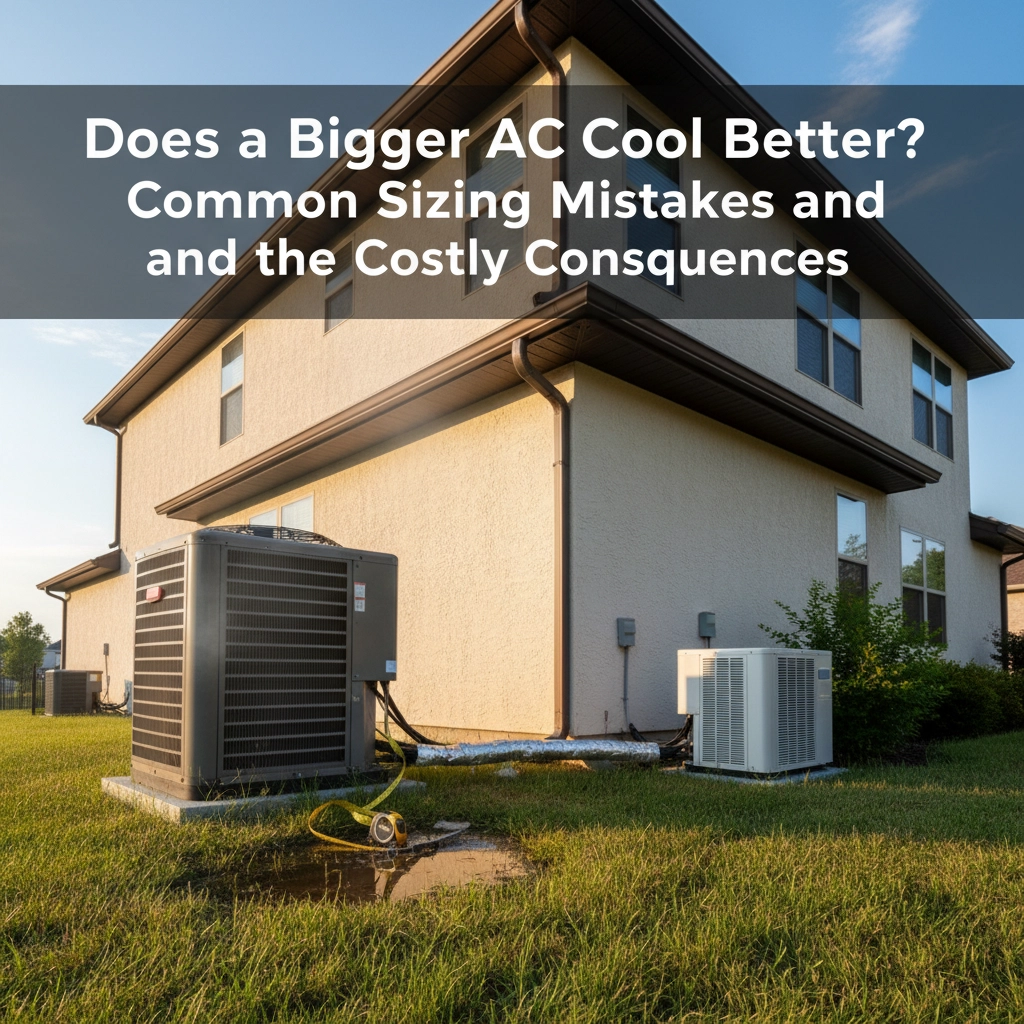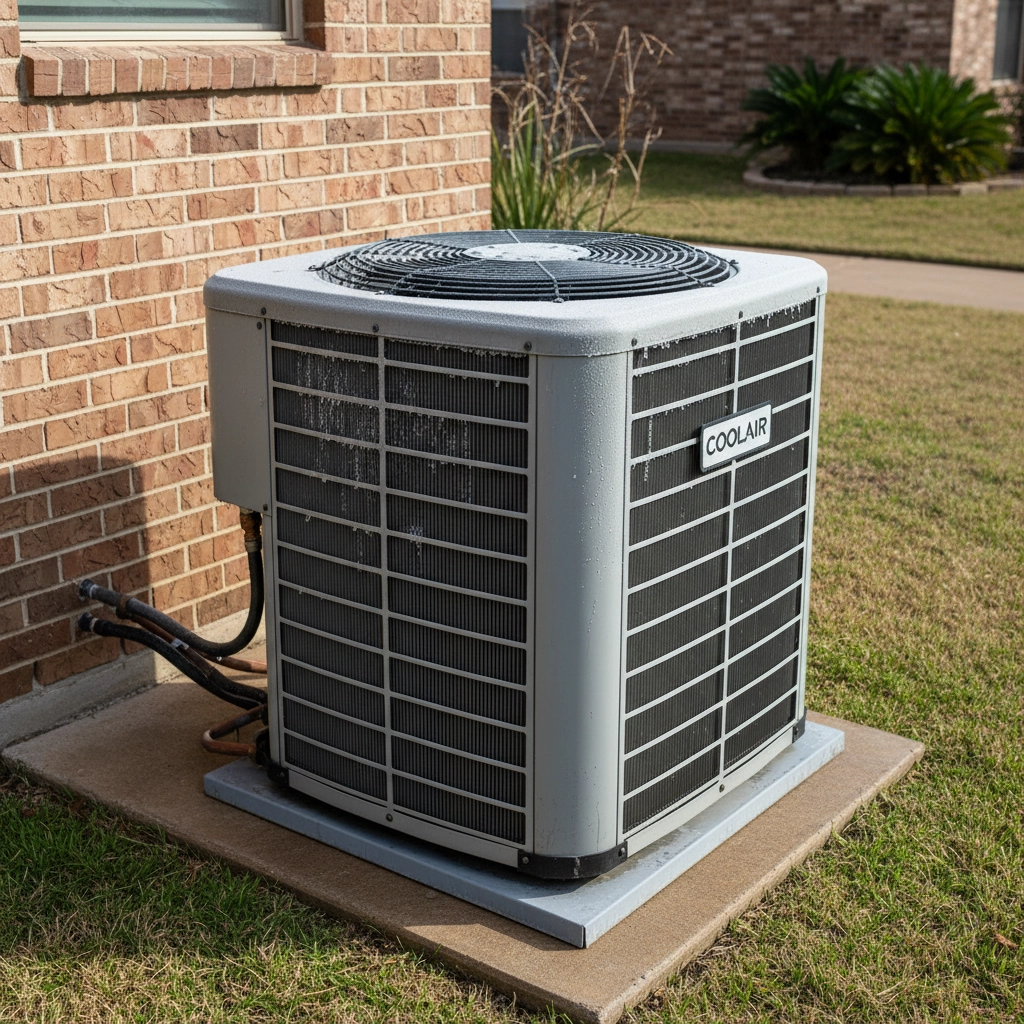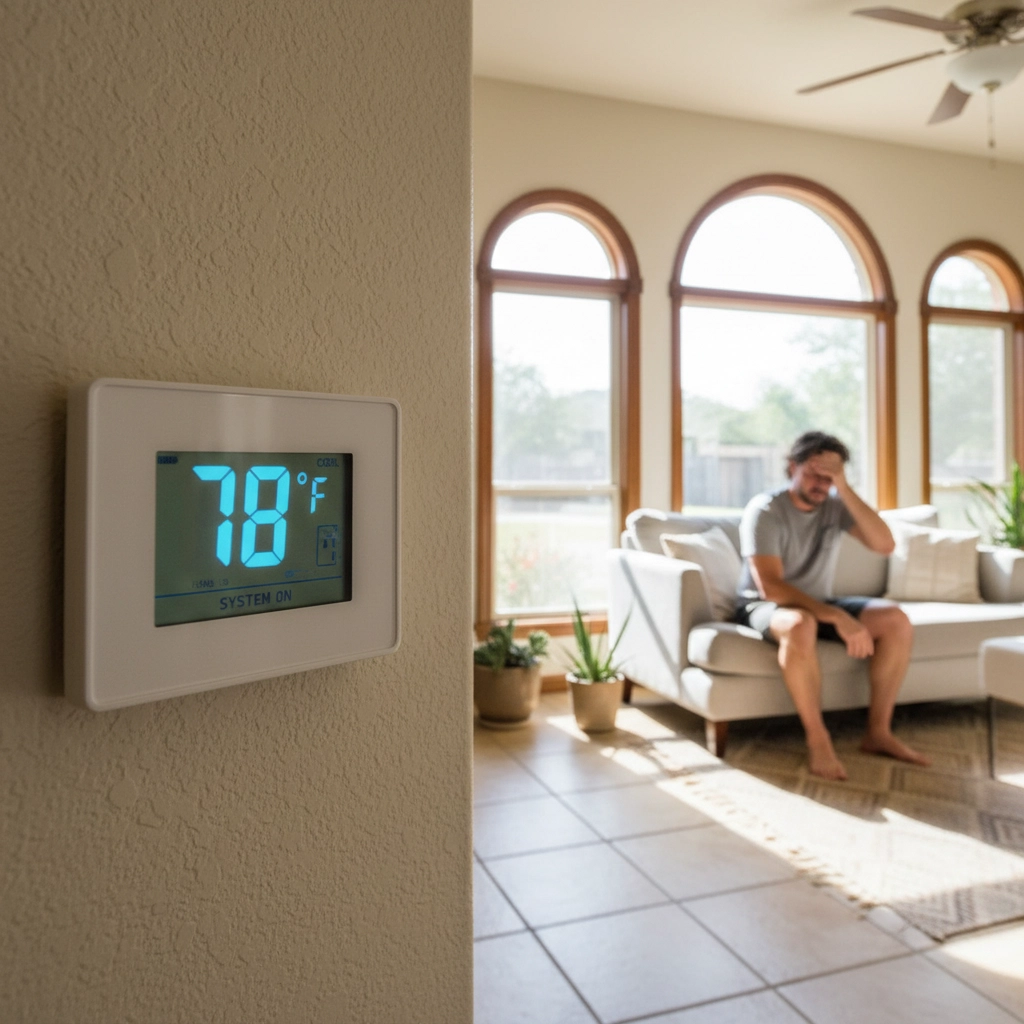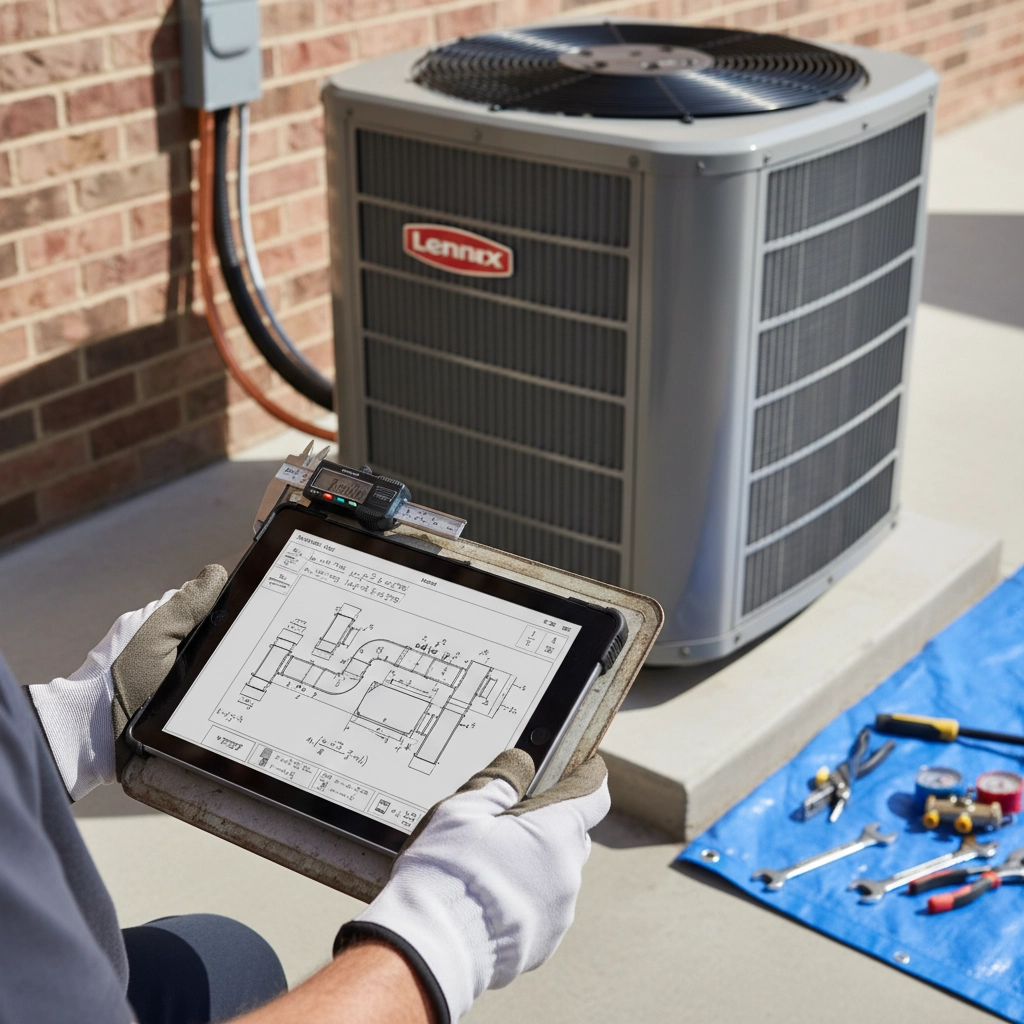Does a Bigger AC Cool Better? Common Sizing Mistakes and the Costly Consequences
If you think buying the biggest air conditioner will keep your Austin home ice cold during those brutal Texas summers, think again. This “bigger is better” mentality is one of the most expensive mistakes homeowners make, and it’s costing folks across Central Texas thousands of dollars in wasted energy, uncomfortable living conditions, and premature equipment replacement.
The truth? An oversized AC unit doesn’t cool better – it actually makes your home less comfortable while leaving you with excess humidity. And an undersized unit? That’s just as bad, leaving you sweating through those 100+ degree days while your system works itself to death trying to keep up.
Let’s break down why proper AC sizing matters so much and what happens when you get it wrong.
The Short Cycling Problem: When Your AC is Too Big
Picture this: You install a shiny new 5-ton AC unit in your 1,800 square foot home because you want to stay extra cool. Sounds smart, right? Wrong. That oversized unit is going to blast cold air so fast that it’ll reach your thermostat’s target temperature in just a few minutes, then shut off. Ten minutes later, it kicks on again. And again. And again.
This constant on-off cycling is called “short cycling,” and it’s a nightmare for both your comfort and your wallet.
Here’s what happens: Your AC needs time to pull moisture out of the air while it’s cooling. When an oversized unit runs for only a few minutes at a time, it never gets the chance to properly dehumidify your home. The result? Your house might hit 72 degrees on the thermostat, but it feels clammy and gross because the humidity is still sky-high.
Austin’s notorious humidity makes this problem even worse. You end up with that sticky, uncomfortable feeling even though your thermostat says everything’s fine. Many homeowners try to solve this by cranking the temperature down even more, which just wastes more energy and money.
The frequent starting and stopping also puts enormous stress on your equipment. Think about it – starting up an AC unit is like flooring your car from a dead stop. Doing that dozens of times per day instead of running at a steady pace wears out your system fast. We’ve seen oversized units fail within 5-7 years instead of lasting the typical 12-15 years.
When Your AC is Too Small: The Never-Ending Battle
On the flip side, an undersized AC unit faces its own set of problems. Let’s say you try to cool a 2,500 square foot home with a 3-ton unit to save money upfront. That poor system is going to run 24/7 during Austin’s summer heat, desperately trying to reach your target temperature but never quite getting there.
The constant operation drives your electric bills through the roof. We’ve seen homeowners with undersized systems paying 40-50% more on their summer electricity bills compared to properly sized units. Plus, certain rooms in your house – especially upstairs bedrooms or rooms facing west – will be noticeably warmer than others.
Just like with oversized units, this constant strain shortens your equipment’s lifespan significantly. Running non-stop for months puts wear on every component, from the compressor to the blower motor. You’ll face more frequent repairs and earlier replacement.
Real-World Warning Signs: What Homeowners Actually Notice
So how do you know if your AC is the wrong size? Here are the symptoms we hear about most often from Austin homeowners:
Signs of an Oversized Unit:
- Your AC constantly turns on and off every few minutes
- The house feels clammy or humid even when it’s cool
- Some rooms are freezing while others are too warm
- Your energy bills are higher than expected for a newer, efficient unit
- You hear the system starting up frequently throughout the day
Signs of an Undersized Unit:
- Your AC runs constantly but never reaches the set temperature
- Upstairs rooms are significantly warmer than downstairs
- Your system struggles on hot days (90+ degrees)
- Energy bills keep climbing during summer months
- The house takes forever to cool down when you get home
If any of these sound familiar, your AC may be the wrong size for your home.
Why Professional Load Calculations Matter
Here’s where many homeowners and even some contractors get it wrong: they use outdated rules of thumb or square footage alone to size AC units. You might hear “one ton per 500 square feet” or see online calculators that only ask for your home’s size.
Professional HVAC companies like Accu-Temp recommend what’s called a “Manual J load calculation” – a comprehensive analysis that considers dozens of factors specific to your home and Austin’s climate.
A proper load calculation accounts for:
- Your home’s square footage and ceiling height
- Insulation levels in walls, attic, and floors
- Number, size, and type of windows and doors
- Which direction your home faces (south-facing homes get more heat)
- Local climate data specific to Austin
- Number of occupants
- Heat-generating appliances and electronics
- Ductwork design and condition
This detailed analysis typically shows that most Austin homes need between 18-24 BTUs per square foot, but that range can vary significantly based on your specific situation. A well-insulated home with quality windows might need closer to 18 BTUs per square foot, while an older home with single-pane windows might need 26+ BTUs per square foot.
The Financial Impact of Getting It Right
Proper AC sizing isn’t just about comfort – it’s about your money. A correctly sized system operates efficiently, maintains consistent temperatures, and lasts longer. Over a 15-year lifespan, the savings from proper sizing can easily reach thousands of dollars.
Consider this: An oversized 4-ton unit might cost $300-400 more per year to operate than a properly sized 3-ton unit. Over 15 years, that’s $4,500-6,000 in wasted electricity costs. Add in the earlier replacement due to premature failure, and you’re looking at substantial financial losses.
An undersized unit might seem cheaper upfront, but the constant operation during Austin’s long cooling season can cost even more. Plus, you’ll never be truly comfortable in your own home.
Austin’s Unique Climate Challenges
Living in Central Texas presents unique challenges for AC sizing. Our climate includes:
- Extended cooling seasons (often April through October)
- High humidity levels that make proper dehumidification crucial
- Significant temperature swings between day and night
- Intense solar heat gain, especially on west-facing walls
These factors make professional sizing even more critical than in other parts of the country. A system sized correctly for Austin’s specific conditions will handle both the temperature and humidity loads effectively.
Getting It Right with Professional Help
At Accu-Temp Air Conditioning & Heating, we’ve seen the costly consequences of improper AC sizing countless times. That’s why we always start with a comprehensive evaluation before recommending any equipment.
Our process includes a detailed assessment of your home’s unique characteristics, current ductwork condition, and your family’s specific comfort needs. We don’t just look at a quick answer – we analyze everything that affects your cooling load to determine the optimal system size for maximum comfort, efficiency, and longevity.
The bottom line? Don’t fall for the “bigger is better” myth or try to save money with an undersized unit. The right-sized AC system will keep your Austin home comfortable year-round while minimizing your energy costs and maximizing your equipment’s lifespan. When it’s time to replace or upgrade your system, invest in professional sizing – your comfort and your wallet will thank you.




